Baked Mocha Sago Pudding
A Brief Return to Innocence
– JUMP TO RECIPE –
– PRINT RECIPE –
Deliciously ghoulish, Gran Kowie called the basic, traditional
version of this classic old dessert Frog Eggs Pudding. Off course we children
devoured it literally and figuratively! I mean, which child of the 70’s
wouldn’t? The morbid ring of the name and translucent pearls (surrounded by
mushy baked custard) were sufficiently intriguing to maybe, just maybe be true
for once. Particularly since none of us city kids had yet seen any real frogs’
eggs except in books. And Granny promised it was really, really frog’s
eggs …
The fairly bland taste of traditional baked sago
pudding (topped with a layer of baked apricot jam) should’ve rather obviously
hinted to us the grown-ups were yet again lying to us. But on the other hand,
for once, it was a delicious lie. Only much later in life did I discover that
many of the fundamental ‘truths’ we children were indoctrinated with during our
formative years, were in fact pernicious lies. Lies designed to look like the
obvious truth; yet hiding few awful facts that probably would’ve made us more
effective and realistic human beings had we been exposed to them from the
beginning. Alas …
Then again, maybe our parents and grandparents were too
naïve to recognize their fundamental ‘truths’ for what they really were:
fallacies. Possibly, also, our parents and grandparents maybe did recognize the
uselessness of their ‘truths’, but chose instead to live in complacent,
self-enforced ignorance rather than face the real facts, most of which are
nasty and depressing. Perhaps they themselves, our unsuspecting parents and
grandparents, did not realise they were also being lied to by the authorities,
their social ‘betters’ and all the higher powers: including Church, State and
Cultural Institutions.
I have no experience with tapioca puddings, but the
baked sago puddings of my youth were invariably fairly bland, mushy affairs
designed to go down easily after a hefty Sunday lunch. Gran Kowie (on her far
too few and irregular visits) prepared baked sago pudding for the odd Sunday
lunch only. The primary reason for the existence of sago pudding, I suspect,
was that in that era pudding was de
rigueur after Sunday lunch. Having partaken of roast lamb or beef, roasted
potatoes, rice with gravy and an assortment of buttered vegetables (roasted,
stewed, casseroled, gratinated, etc.), you did not want to strain your
digestive system any further. But pudding was pudding and it would simply not
do to refuse – and thereby insult – your hostess or better half. Mom never made
it for Sunday lunch nor any other event. I never figured out why.
The standard baked sago pudding of back then was sago
pearls cooked with milk and butter until thick and translucent. More milk,
sugar (usually brown), eggs and a tad of vanilla essence were whipped together
and mixed into the thickened sago. This lot was then tipped into a buttered
baking dish, placed into a pan with hot water and baked in a medium oven until
set. The finishing touch was to spread hot apricot jam over the top just as the
pudding had set and then returning it to the oven and grilling it lightly until
the apricot jam started to bubble up and brown. Invariably you had to keep your
wits about you at this step since if the jam charred, you were royally screwed.
I suspect the mushy texture; enlivened by the contrast
of the sticky, tangy baked apricot jam layer on top was the main attraction of
traditional baked sago pudding. And if your hostess was a kind and generous
person, she put on so much apricot jam that it baked into a tangy, leathery
layer that you could lift off the surface of the pudd. Divine, oh so divine
that wobbly square of deep fruitiness was! It was a mouth-watering conundrum:
did you devour it straight away or did you rather set it aside in your pudding
bowl to be savored last in a slippery, jelly-like essence of apricoty wonder?
I also suspect that modern children are way too jaded
to fall for the frog eggs ruse. YouTube, television (with a small contribution
by National Geographic Channel) and dramatically changed social norms grandly
contributed to the loss of innocence of said modern youth. But then again, I
don’t have children, so what do I know?
Baked Mocha Sago Pudding is my slightly updated take
on the traditional baked sago pudding of my youth. Introducing new flavours
jazzes the old girl up quite dramatically and topping the ensemble off with
toasted almond flakes and honey puts some glitter back into the old dear’s
disco ball. Serve it as is or with stewed, dried pears and prunes on the side,
and we’re ready to dance the night away.
Do show some restraint with the stewed prunes? Else
you rush off to the loo, all thoughts of dancing cast aside in your urgency.
BAKED MOCHA SAGO PUDDING
– PRINT RECIPE –
|
Recipe yields: 2 – 4 Portions |
Preparation time: ± 25 minutes |
Baking time: 35 – 40 minutes |
Difficulty level: Easy |
Special Equipment Required:
For 2 portions: a ± 500ml baking dish, glass or
porcelain.
For 4 portions: a ± 1.2L baking dish, glass or
porcelain.
Ingredients:
|
|
2 Portions |
|
4 Portions |
|
Sago pearls |
45ml / 40g |
|
80ml / 65g |
|
Full cream milk |
100ml |
|
150ml |
|
|
|
|
|
|
Full cream milk |
200ml |
|
350ml |
|
Molten butter |
10ml |
|
15ml |
|
X/L eggs |
1 |
|
2 |
|
Brown sugar |
45ml |
|
60ml |
|
Coffee / Mocha essence |
± 3ml |
|
5ml |
|
Caramel essence |
1.2ml |
|
2.5ml |
|
Hazelnut essence |
1.2ml |
|
2.5ml |
|
Vanilla essence |
1.2ml |
|
2.5ml |
|
Salt |
± 1ml |
|
± 2 ml |
|
|
|
|
|
|
Optional Topping: |
|
|
|
|
Honey, warmed up |
30ml |
|
60ml |
|
Toasted almond flakes |
To taste |
|
To taste |
Method:
- Soak the sago and first batch of milk together for 30 minutes in a medium sized saucepan.
- Add the second batch of milk – MINUS 45ml – to the soaked sago. Warm up over medium heat until the contents starts to simmer. Stir frequently. Turn the heat down to medium low to maintain a gentle simmer.
- Simmer slowly with frequent stirring until the sago is soft and translucent, approx. 10 – 12 minutes. Stir continuously near the end when the sago starts to thicken and turns translucent.
- Remove from the heat when the cooked sago is quite thick and the individual pearls fully translucent.
- Add the molten butter and whisk in.
- Combine the remaining milk, egg, sugar, salt and flavourings and beat together with an electrical mixer until light & creamy, approx 5 –7 minutes. After 3 – 4 minutes, add 5ml of water if the egg mixture is slow to whip up.
- Pour the egg mixture slowly into the hot sago. Mix continuously with a whisk until all the egg mixture is added.
- Transfer the sago mixture to a well greased baking dish and bake 30 – 35 minutes at 165°C (in a convection oven) in a water bath prepared with boiling water that comes up to the level of the sago mixture inside the baking dish. Bake 40 – 45 minutes at 180°C in a normal, non-fan oven.
- Remove from the oven and pour the warmed honey evenly over the surface of the baked pudding. Spread the honey carefully out in an even layer over the hot surface of the baked pudding. Use the back of a teaspoon for this operation. Allow to cool ± 15 minutes before serving still hot.
- Decorate with the toasted almond flakes just prior to serving.
Comments:
- Hazelnut essence is often hard to obtain if you do not have an above average baking supply store in the vicinity. A possible substitute is the hazelnut syrups frequently found in the hot beverage section of many up market chain stores. You’ll have to play around with the volumes added to the dessert to obtain just a hint of hazelnut in the flavour background of the final baked dessert.
- Alternatively, substitute almond essence for the hazelnut.
- Serve with stewed, dried pears and prunes. This is not the ‘standard’ accompaniment, which is thick custard. However, the dessert’s internal structure already closely resembles a mushy custard. Pointless to add more of the same then. Dried pears and prunes pair very well with the overall coffee / mocha flavour profile and is my slight modernization – along with the dominant coffee / mocha flavour – of this old classic.
- When pressed for time, you can forego the water bath and bake the pudding directly as is. However, the final product is generally noticeably denser than and not as mushy as its water bath version. It will also cook much faster, 25 – 30 minutes in a convection oven. Unavoidably, the non-water bath version loses some of its charm and glitz. C’est la vie.
- Go slow on the stewed dried prunes? Their reputation as an effective and fast laxative is very well deserved.
© RS Young, 2021
– RECIPE INDEX PAGE –
Follow Me on Facebook
Note:
Post updated on 2025.01.20 to include:
1.
The updated Recipe for downloading as a PDF file, and
2.
Recipe Title and Print Recipe, Recipe Index and Facebook & Pinterest follow
links.

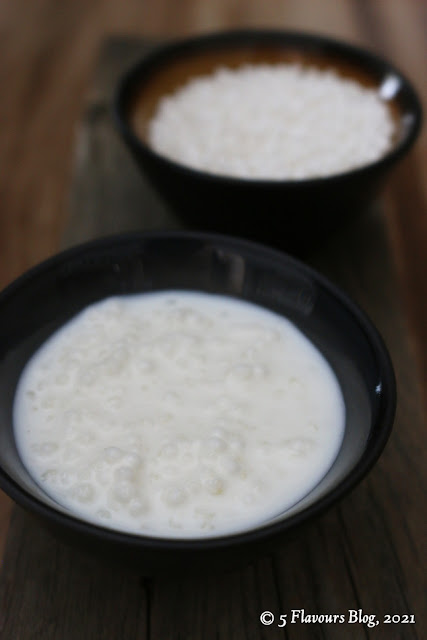

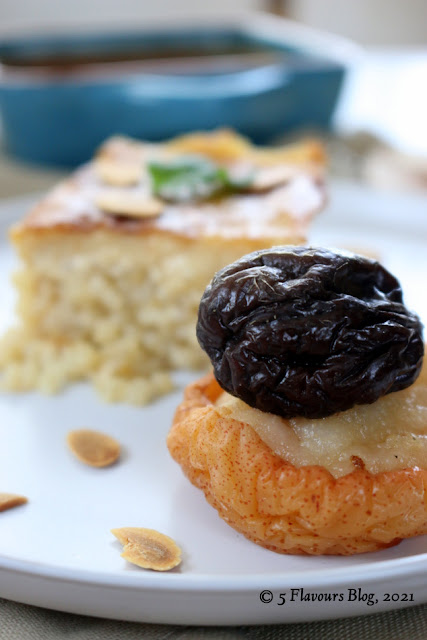
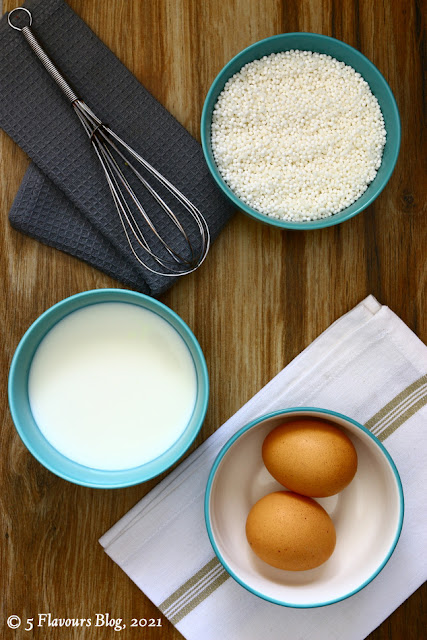
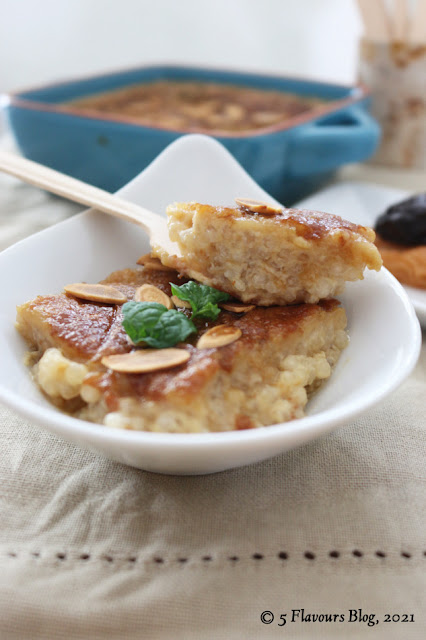
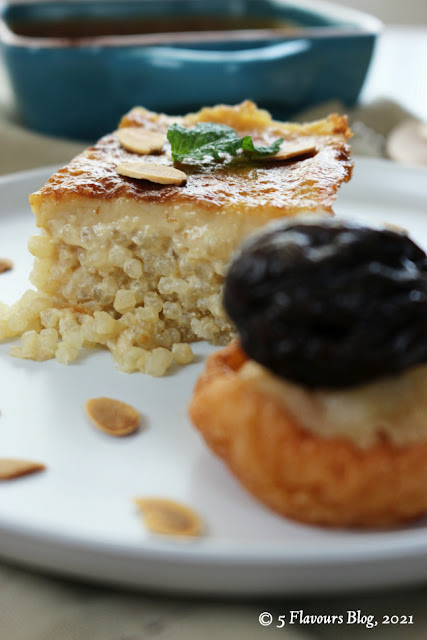
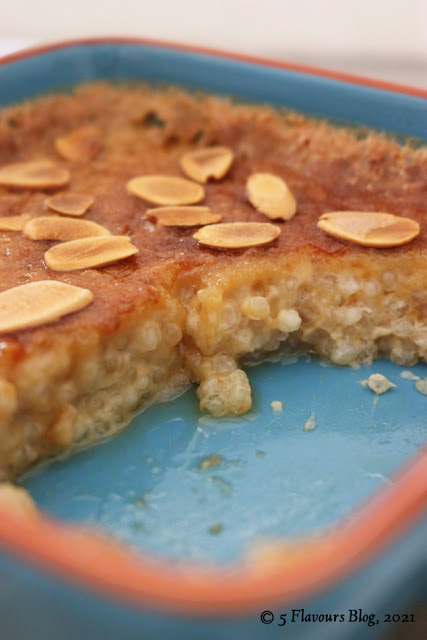
Comments
Post a Comment